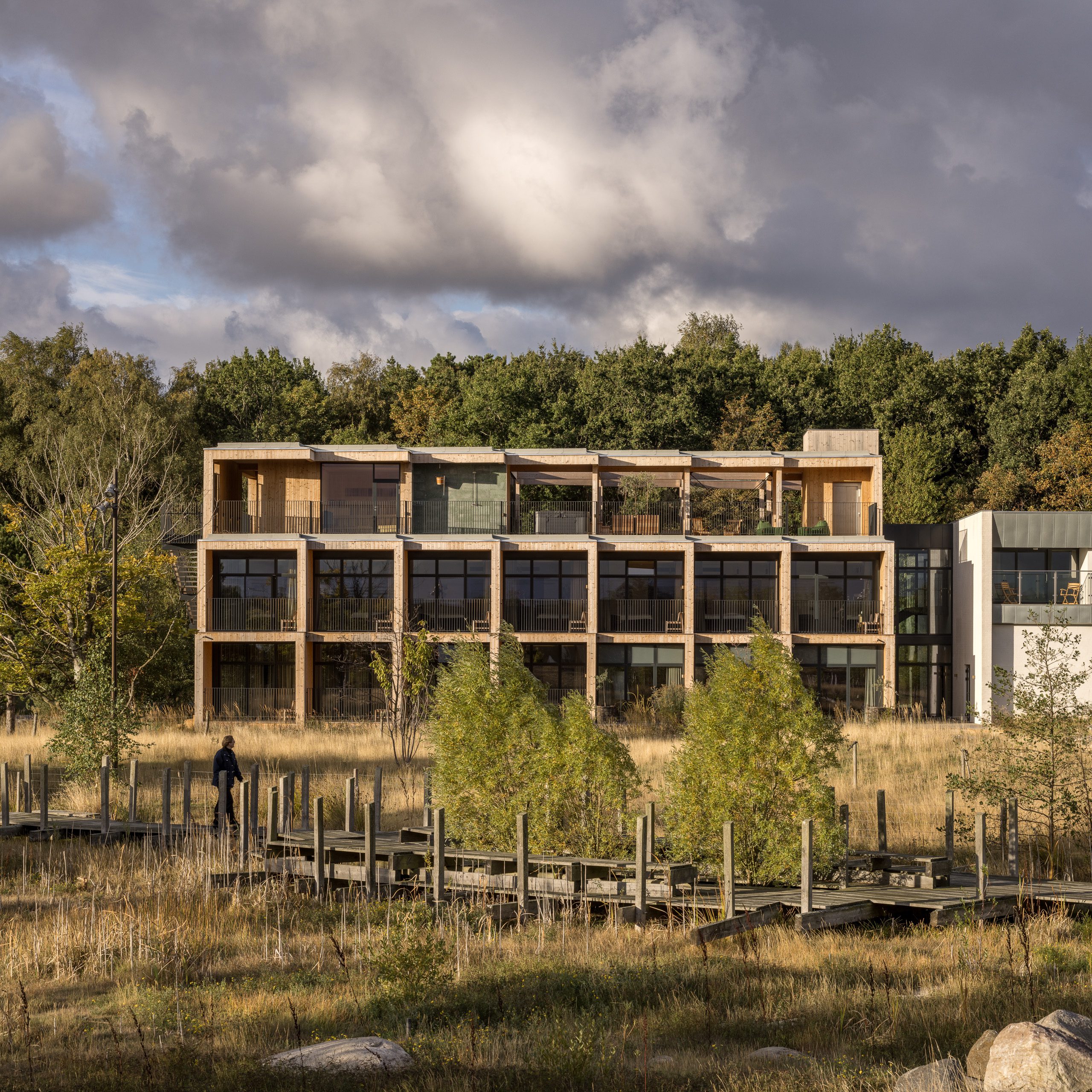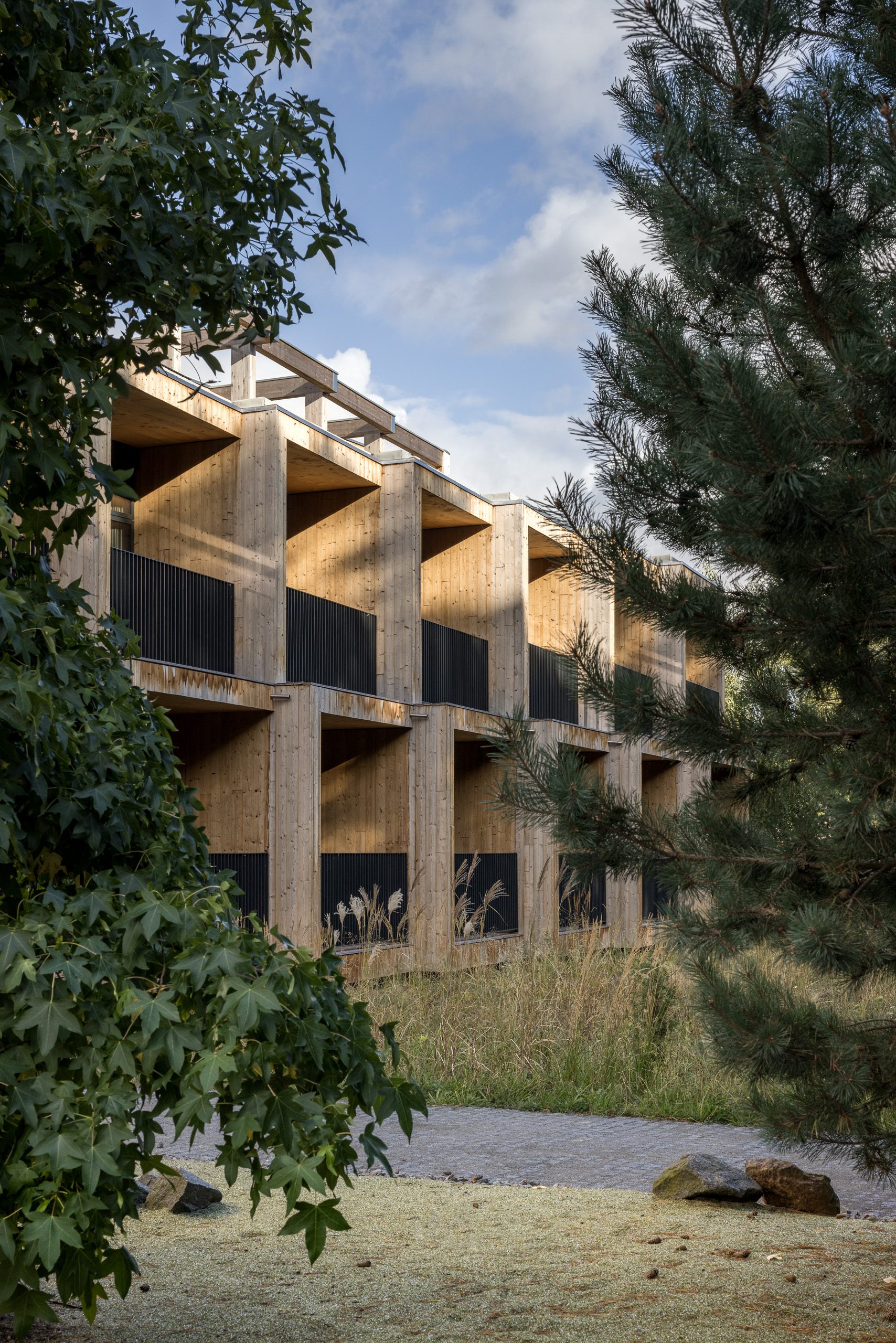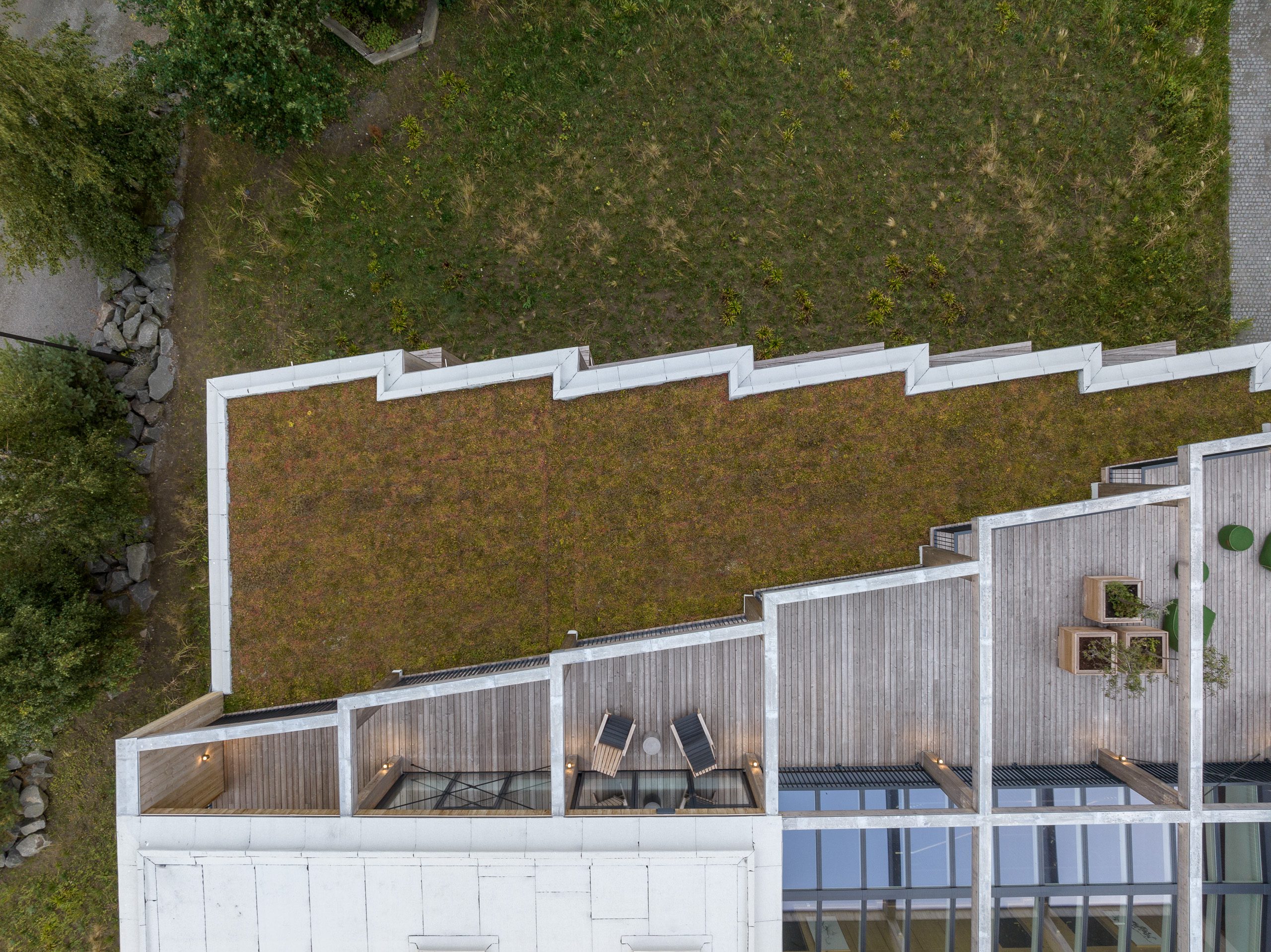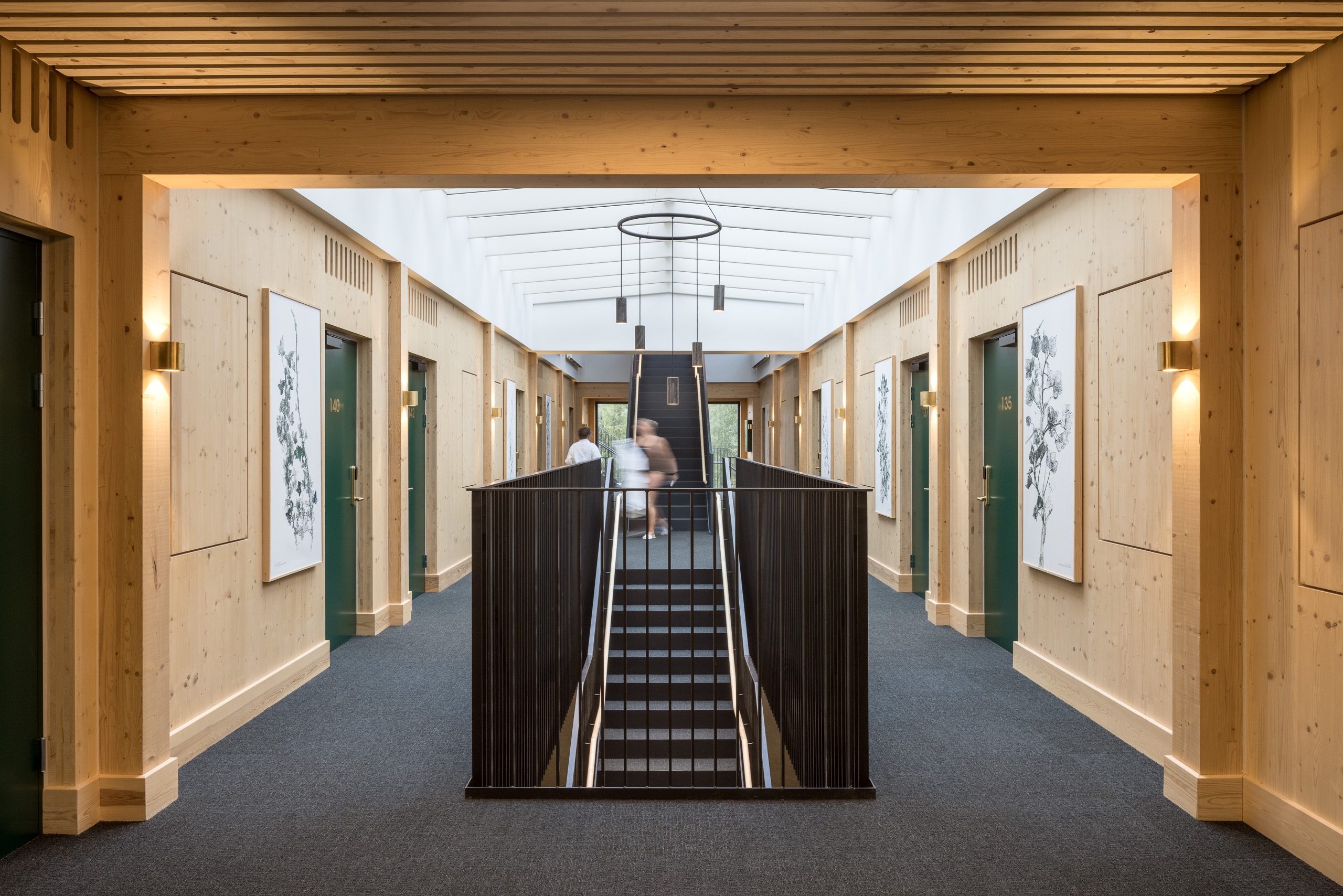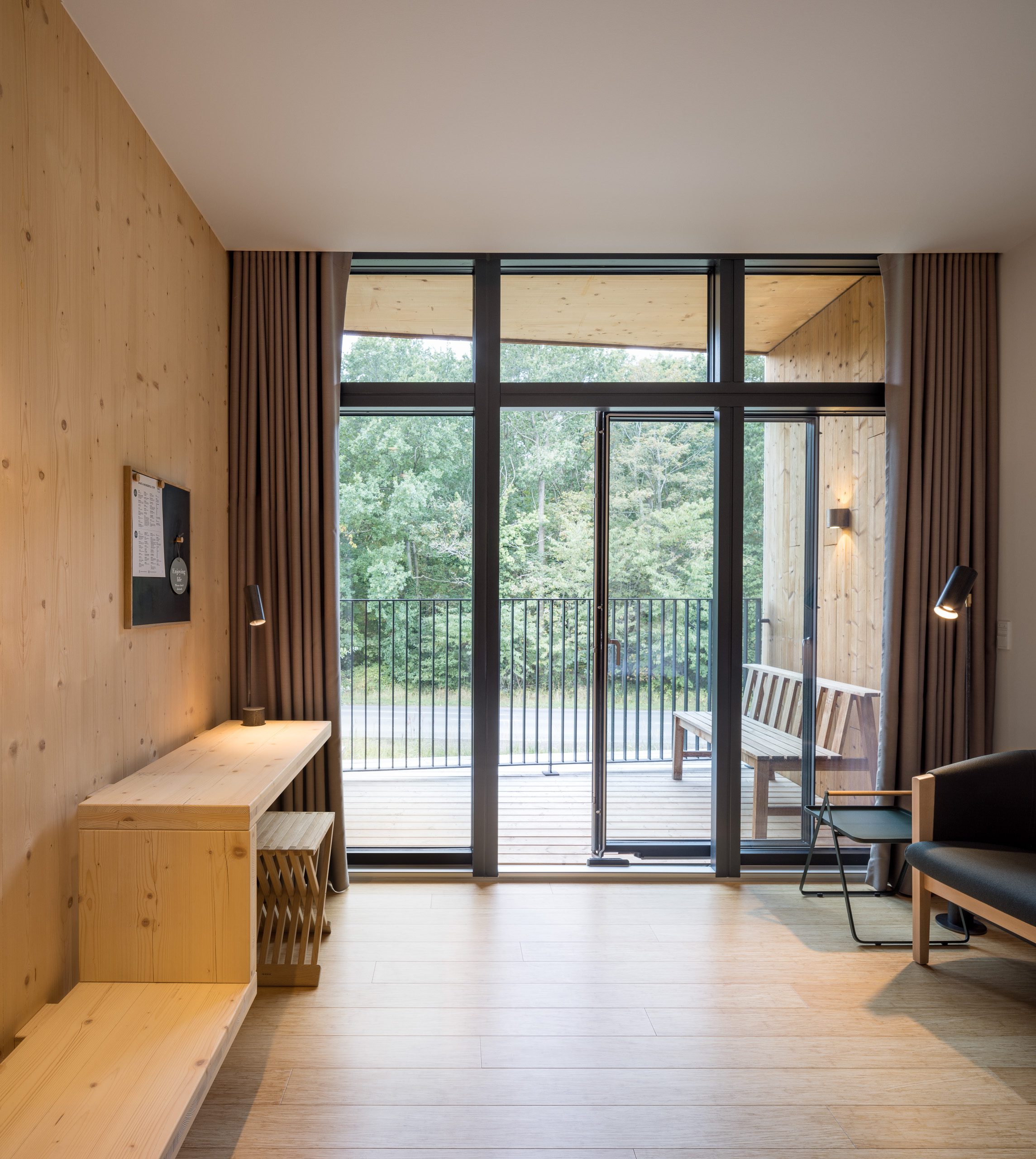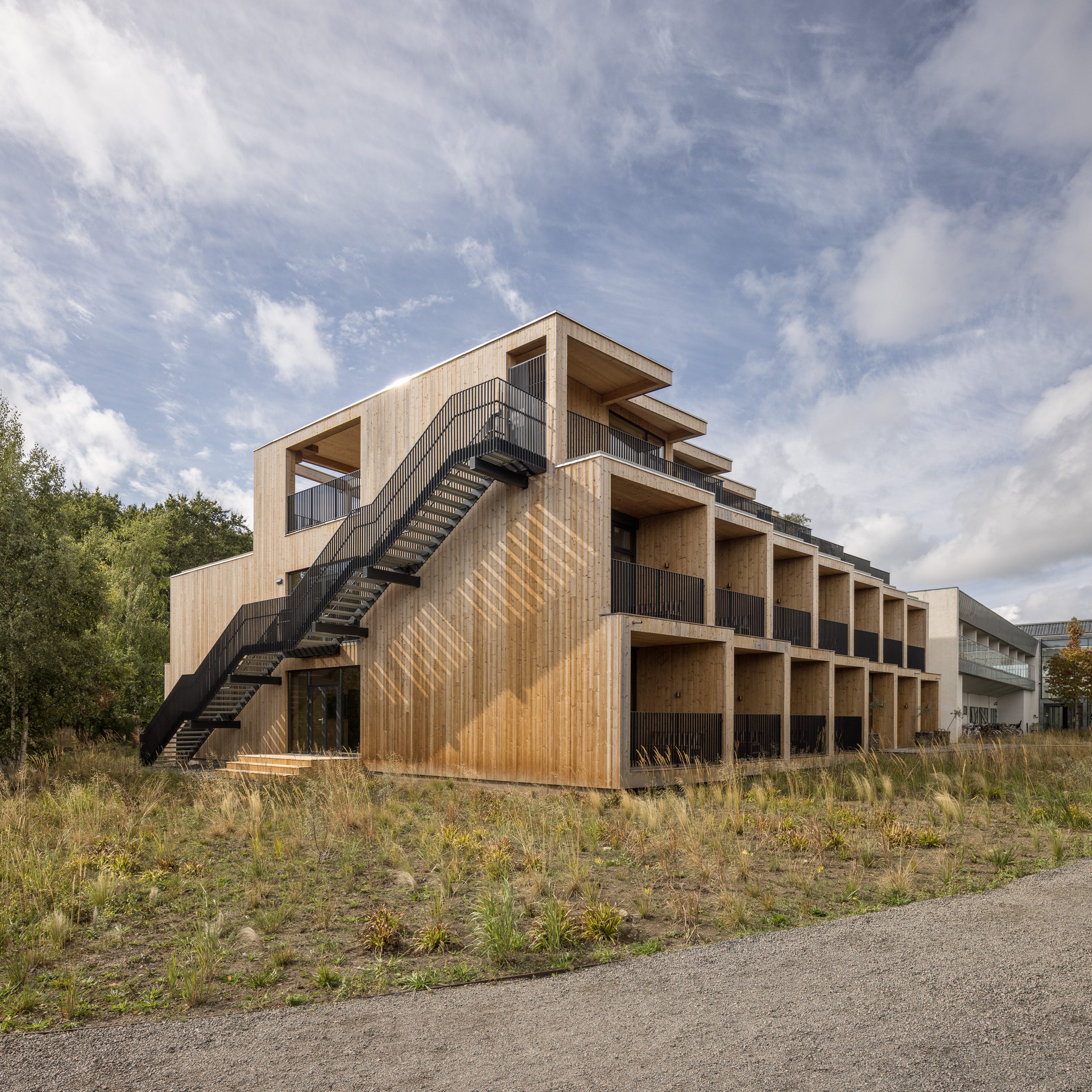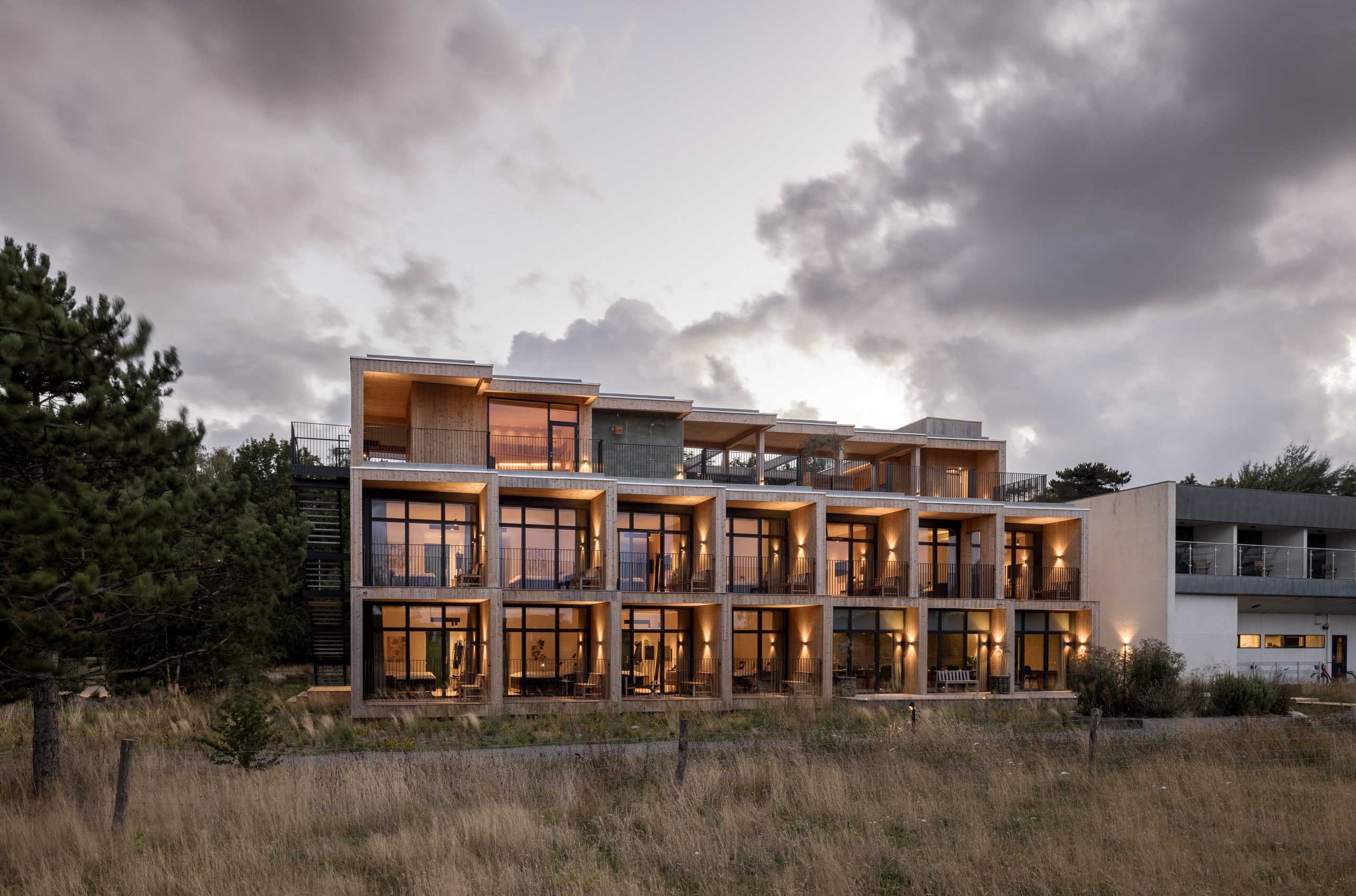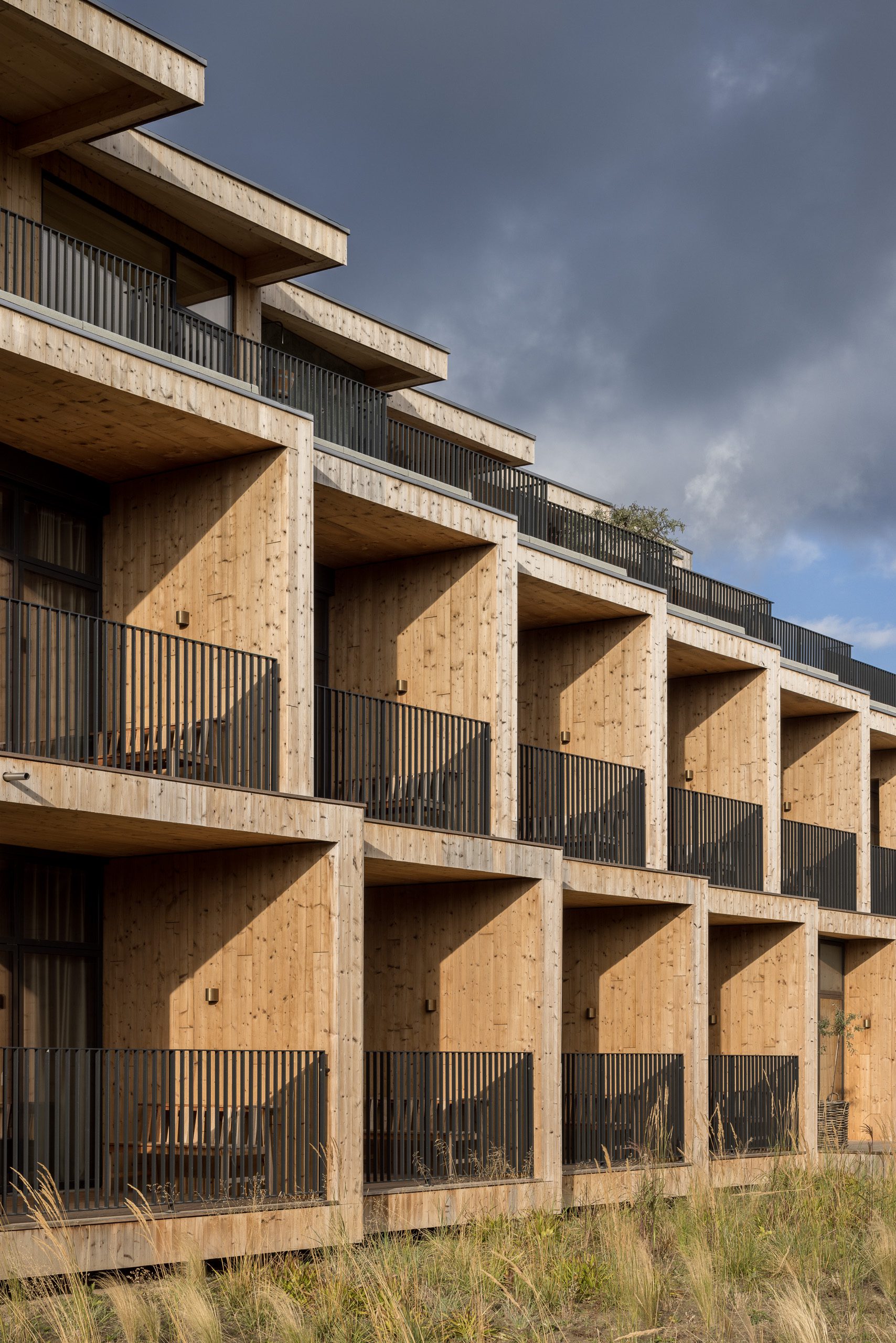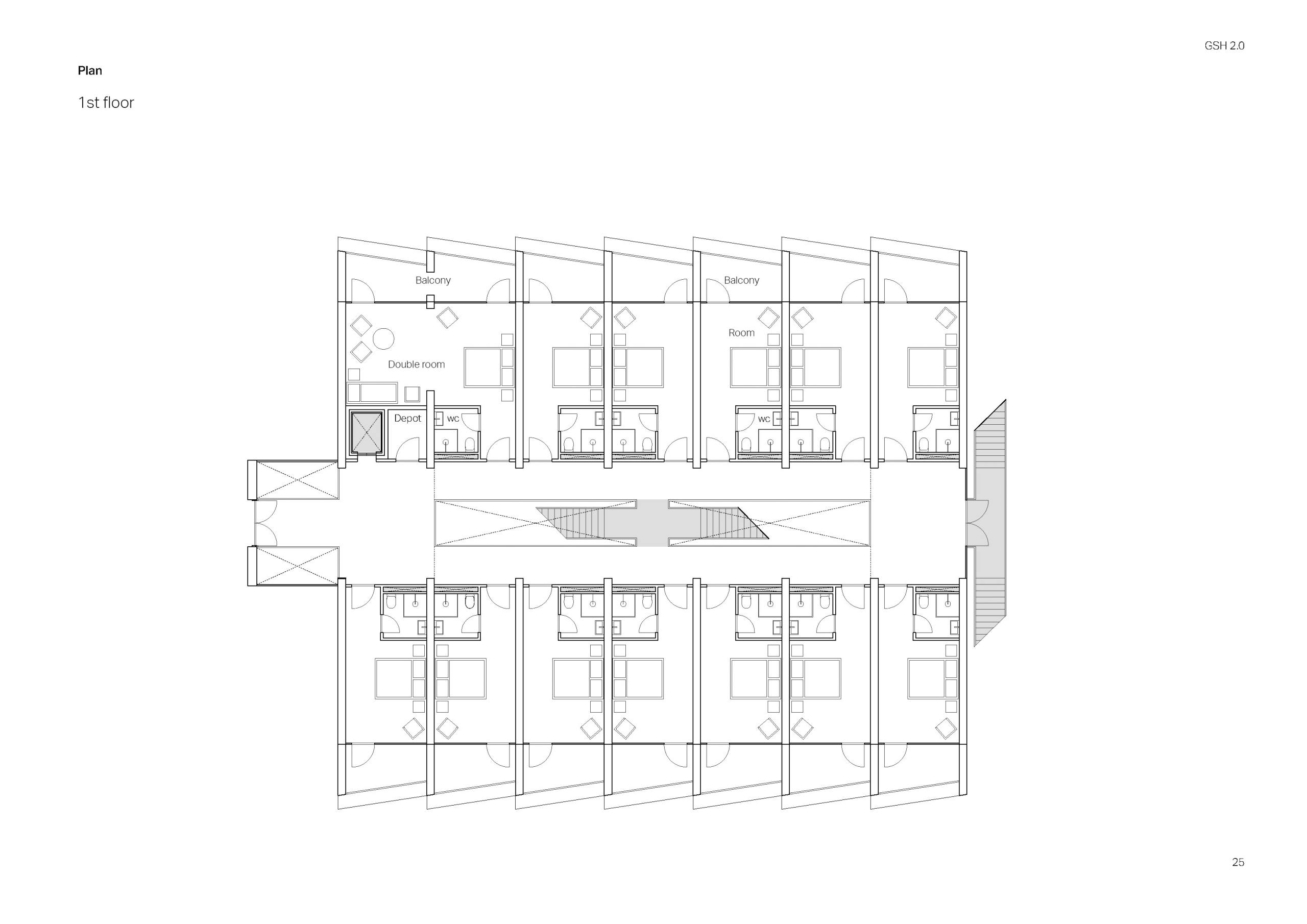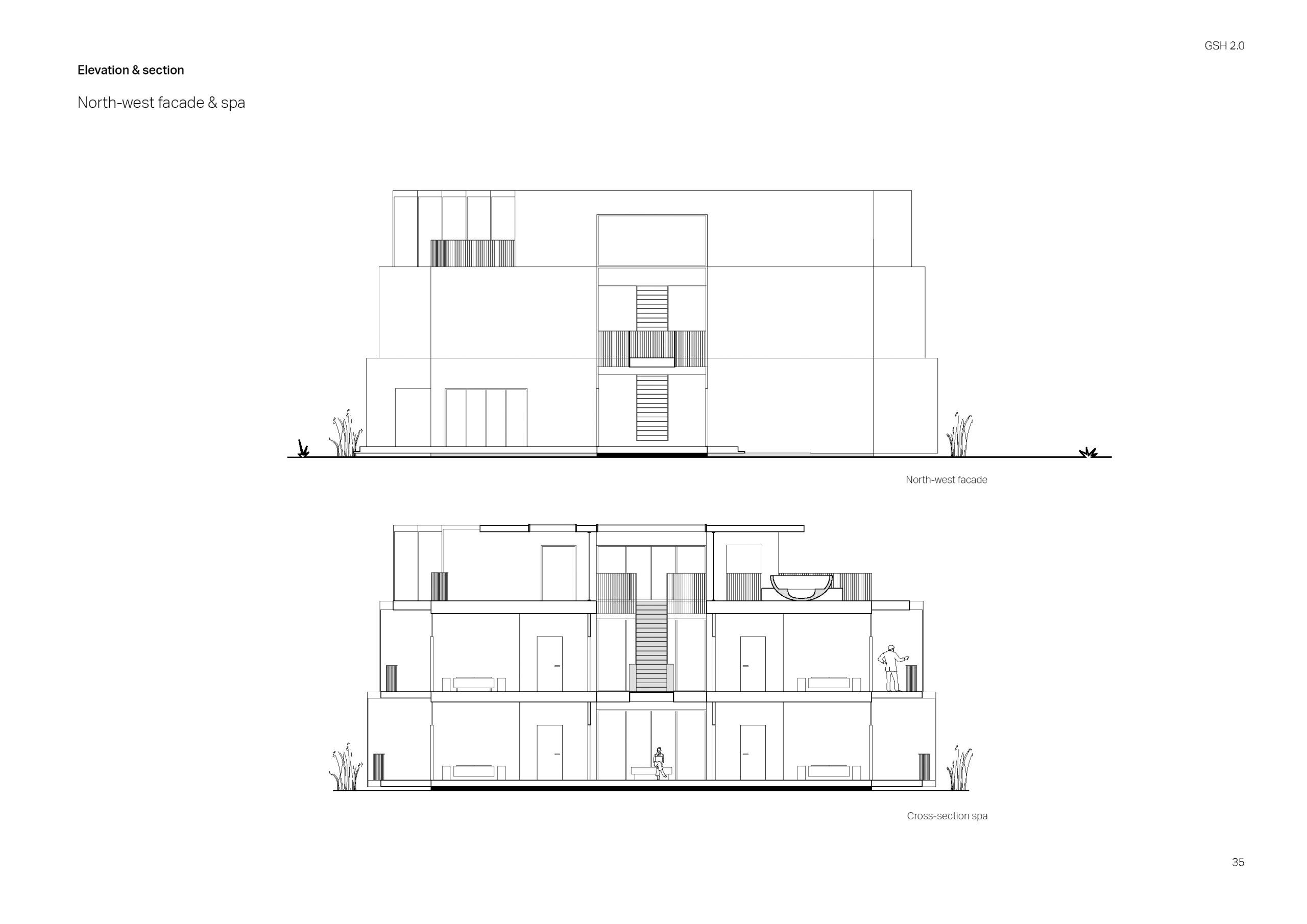Green Solution House 2.0/
3XN
GXN
Project Details

Location(City/Country):
Strandvejen, Rønne / Denmark
Tipology:
Hotel
Year (Design/Construction):
2021 / 2022
Area (Net/Gross):
1035 m2 / -
Operational Carbon emissions (B6) kgCO2e/m2/y:
-
Embodied Carbon emissions (A1-A3) kgCO2e/m2:
-- Timber is the primary construction material and provides the hotel’s structure, cladding, and insulation.
- Regular Design and Offsite Construction comprising a standard ‘kit of parts’, reduces the material waste.
- Exposed CLT panels to the interior, minimising the number of layers and materials required.
- Offcuts from the CLT panels used to create bespoke furniture items for the hotel.
- Generous skylights and carefully orientated glazing provides good levels of daylight and natural ventilation to the rooms.
- Rooftop solar cells and onsite water recycling further reduce the reliance of grid-supplied resources.
Green Solution House 2.0 is a hotel in the town of Rønne on the Danish island of Bornholm. Developed in very close collaboration between 3XN and GXN the hotel’s design is rooted in rigorous sustainability principles in materials, construction, and performance, and is an uncompromising development of the adjoining Green Solution House completed by 3XN and GXN in 2015.
Chosen, in part, for its unrivalled sustainability credentials and ability to lock away carbon, timber is the primary construction material and provides the hotel’s structure, cladding, and insulation. The design exposes and celebrates the carefully chosen materials throughout the building, and this is immediately evident on arrival from the warm natural aesthetic of the timber cladding. The main elements of the building, including the walls and slabs, are composed of large, prefabricated cross-laminated timber (CLT) panels manufactured in a factory and simply assembled on site. This method minimises construction time, costs and waste and ensures a high degree of accuracy in production. Comprising a standard ‘kit of parts’, an angled arrangement of simple box-like units makes up the building’s volume and forms a distinctive serrated façade while providing each room with a private, enclosed balcony and views to the surrounding natural landscape.
The design further exploits the high accuracy and repeatable process of the computer-controlled fabrication method to incorporate bespoke solutions at a much lower cost than traditional construction methods. Features such as elegant grills for natural ventilation are cut directly into the CLT panels, demonstrating the benefit of a holistic design approach and the synergy between design, manufacturing, and performance. The standardised design of the units also allowed the designers to carefully predict the dimensions and quantity of material offcuts, which would otherwise go to waste, and use them to create bespoke furniture items for the hotel.
Internally, exposed CLT panels continue the ethos of honest material finishes and provide a welcoming domestic character to the spaces and a consistent dialogue between exterior and interior. Generous skylights and carefully orientated glazing bring ample daylight into the interiors, reduce the need for artificial lighting and provide a strong connection to the surroundings, while also providing natural ventilation and eliminating the need for mechanical solutions. This holistic design approach provides solutions that ensure the building will also be sustainable in operation throughout its lifetime while contributing to a healthy and uplifting interior environment for the guests and staff. Rooftop solar cells and onsite water recycling further reduce the reliance of grid-supplied resources.
A rooftop terrace and spa provide guests with a quiet retreat overlooking the adjacent woodland. Here, timber finishes are complemented by tiles of upcycled glass from local sources, providing a palette of materials reflective of the building’s focus on environmental sustainability. In this way, GSH2.0 stands as a showcase for material innovation, demonstrating that alternative circular solutions can provide an aesthetic quality and performance comparable to virgin material while offering the added benefit of a much lower carbon footprint.
With an ever-increasing focus on sustainability in architecture, it is essential that buildings can meet rigorous carbon reduction targets while retaining a focus on high-quality design and user needs. Through its intelligent, low-cost design solutions GSH2.0 sets a new standard for sustainable timber construction and provides a model for future developments to build upon.
Sustainability Statements
Lasse Lind (architect, partner at GXN, and project lead for Green Solution House 2.0)
The idea is simple – we believe that climate responsible architecture combines good design and good business. Today destination tourism has got multiple dimensions. Hotel GSH provides a blueprint for a climate positive future and this experience is a destination worth travelling for, which ultimately makes it a good business for our client.
The widespread use of timber is both good for the climate and gives a particularly warm atmosphere. The building itself is an expression of the hotel’s ambition to make green solutions an attractive element for guests. Building with wood, you don’t have a lot of waste, potentially, in the production. Especially if you think about it like we did in this prototype, where we used all the offcuts for furniture – you can actually close the loop on waste in the production chain a bit.
The approach should be to minimise the use of concrete and steel, but there are just parts of a building where [those materials] makes more sense. I’m very interested that we use materials where they are best, and I think there are a lot of places where we could easily replace concrete or steel with timber. We’re only at the beginning of seeing the possibilities of timber and mass timber.
Aleksander Guldager Kongshaug (architect, GXN associate)
We wanted to have one of the most sustainable buildings in Denmark. We want to work with wood. But we wanted to be, first, a sensorial experience. So, sustainability becomes a feeling and experience and atmosphere within the space. We were pushing for gathering in as much light as possible, getting in the natural daylight. We were pushing for healthy materials everywhere so we would have a healthy indoor climate. We wanted some of these upcycled products as assembled. We were using all the offcuts from CLT. We then transformed them into bespoke furniture design to the hotel.
- Client: Hotel Ryttergården
- Photography: Adam Mørk
